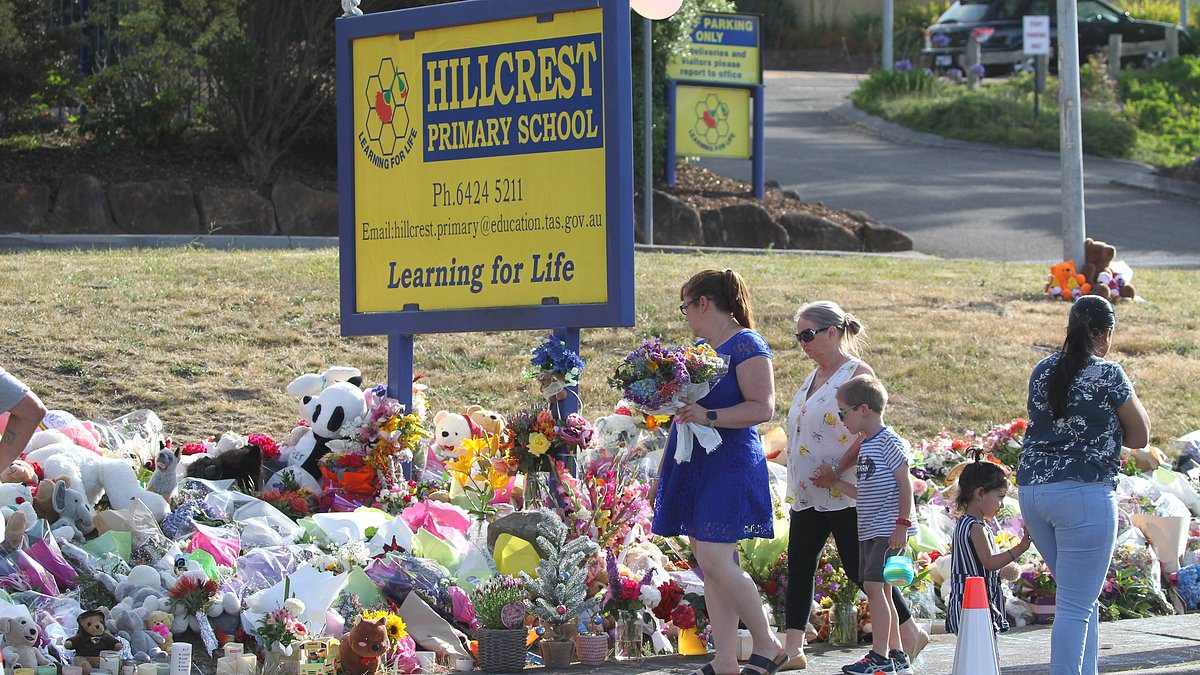A ‘dust devil’ that lifted a jumping castle into the air, killing six primary school children, could not have been foreseen, a court has been told, as the families of the young victims face a months-long wait for the verdict.
The operator of a jumping castle that became airborne and killed six children was hung out to dry by the inflatable device’s ‘bunch-of-crooks’ manufacturer, a court has been told.
Students Chace Harrison, Jalailah Jayne-Maree Jones, Zane Mellor, Addison Stewart, Jye Sheehan and Peter Dodt died after the incident in Tasmania in December 2021.
Three other children were seriously injured when a wind gust lifted the castle and inflatable balls into the air during end-of-year celebrations on the oval of Hillcrest Primary School.
Rosemary Gamble, the operator of Taz-Zorb which supplied and set up the equipment, has pleaded not guilty to failing to comply with a health and safety duty.
In closing submissions in Devonport Magistrates Court on Monday, Gamble’s lawyer Chris Dockray said his client had previously used the castle more than 100 times without incident.
It has been alleged pegs not compliant with national standards were used at only four of the castle’s eight anchor points despite the manufacturer’s instructions recommending eight.
The castle’s Chinese manufacturer, East Inflatables, didn’t provide instructions to Gamble upon purchase and only supplied four pegs, Mr Dockray said.
She instead downloaded a two-page manual from the company’s website, he said, which resulted in an interpretation that four pegs were sufficient.
Mr Dockray said Gamble had been ‘failed’ by a safety system predicated on the manufacturer providing instructions.
‘She was left out, hung and dry, from the moment that jumping castle arrived,’ he said.
East Inflatables lied to Gamble about the castle complying with n standards and provided false documents to workplace regulators, Mr Dockray said.
He criticised prosecution suggestions Gamble should have sought more information from the company, labelling East Inflatables a ‘bunch of crooks’.
‘It would be disrespectful to describe (Gamble’s) business as backyard because it clearly wasn’t, but on the evidence she did her very best,’ Mr Dockray said.
‘No one could have foreseen the ‘dust devil’ and there was no anchorage system that could have prevented the outcome.’
Magistrate Robert Webster is expected to deliver a decision on June 6.
The work, health and safety offence carries maximum fines of $1.5million for a company and $300,000 for an individual acting as a business.
Prosecution lawyer Madeleine Wilson said engineering evidence indicated the castle would have likely withstood the wind event if eight J-pegs or eight star pickets had been used.
The use of four pegs allowed ‘clear pathways’ for air to build under the castle, Ms Wilson said, citing evidence from a mechanical engineer.
Ms Wilson said generic instructions provided by East Inflatables should have put Gamble ‘on notice’ to obtain more advice about castle set-up, including an engineer’s assessment.
Mr Dockray said Gamble used YouTube and observed other castle operators to learn how to set up the castle.
Ms Wilson described Gamble’s process as ‘basically trial and error’.
‘There is nothing to suggest she ever sought advice on the correct set-up from someone in the industry,’ she said.
During the hearing, the court was told a ‘mini-tornado’ lifted the castle several metres into the air, with one witness saying it travelled 75metres across the oval.
It was also alleged Gamble had other means available, such as star pickets, to tether the castle but didn’t use them.
According to court documents, seven students were on the castle when a significant weather event dislodged it.
They fell from the castle, while a blower attached to the castle to keep it inflated struck a nearby student.
Preparations for a coronial inquest were paused due to the criminal proceedings, while a class action has also been launched against Gamble as well as the state of Tasmania.
